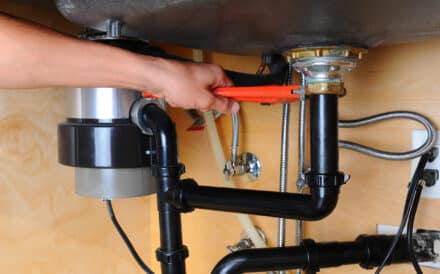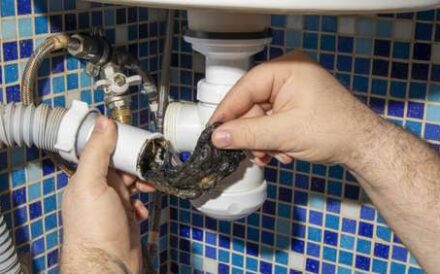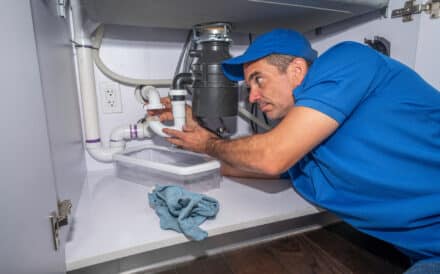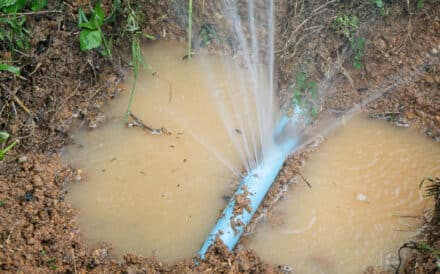Top 5 Common Garbage Disposal Problems and How to Fix Them
Like any appliance, garbage disposals can become problematic under certain circumstances. That doesn’t mean you need to call a plumber whenever anything goes wrong. Here are the top 5 most common problems related to garbage disposals, and how you can fix these issues on your own.
Watch Elvis from Silver State walk through several common garbage disposal problems in this video.
- No Power: If your garbage disposal is unplugged or its breaker has been tripped, it probably isn’t getting any power. Make sure you check both the plug and outlet for the appliance and the corresponding breaker to get it back up and running. If your garbage disposal is plugged in and the breaker appears to be working properly, you may need to contact an electrician to determine if the power issues are due to faulty wiring or another electrical source.
- Clogged Disposal: The most common problem found with garbage disposals is clogging. Trying to put too much food into your disposal, not running water or not running enough water while it’s in operation, and putting food scraps that are difficult to grind into the disposal are just some of the ways you can clog this appliance.
If you do run into problems with a clogged garbage disposal, here are some solutions to try:
How to Fix Your Clogged Garbage Disposal
Allen Wrench
Every garbage disposal comes with an allen wrench. If you have lost yours or misplaced it, you can use any standard ¼-inch allen wrench. Locate the corresponding hole underneath the garbage disposal. It should be right in the center of the bottom of the disposal. Fit the allen wrench into the hole, then wiggle it back and forth until it loosens. Once it’s loosened up, turn the allen wrench one full turn to loosen it further. Start running some water if needed, and then start the disposal. This should help work the clog through naturally.
Reset Button
Did you know that your garbage disposal has a reset button? You can locate it by finding the allen wrench hole and feeling close to the hole: the button will be very near the ¼” hole in the center. Press the reset button, then run the disposal.
If your disposal has overheated, this is another instance to use your reset button. It will reset the machine so that you can run it again (make sure to use lots of water while running it to combat overheating).
Cleaning
If the first two methods yield no results and your disposal is still clogged, you can try to deep clean the disposal with baking soda, vinegar and hot water to help break up the clogs.
3. Leaky Disposal: If you notice that your garbage disposal is leaking, the first step is to locate the source of the leak. From there, you may be able to fix it yourself. If the leak is at a place where there is a connection, try tightening any bolts, clamps, or ties that may be relevant to the source of the leak. If the leak is at or near the top of the disposal, you will need to replace the seal around the sink flange. This seal is typically made up of plumber’s putty, so turn off and detach the disposal, remove the old putty, reseal the area, and reconnect the disposal. This fixes most leaks near the top of the disposal.
4. Slow to Drain: If your disposal is draining slowly, it’s likely due to a small blockage or clog in the drainpipe. You can usually fix this simply by running water and turning the disposal on and off again to clear the clog from the pipe. If this doesn’t work, you can try using a sink plunger and applying medium pressure. You can also try disconnecting the disposal to fish any visible clogs out using a long tool or tongs, or check the drainpipe itself by unscrewing it from the appliance. This last option works best if you have some plumbing know-how. If you don’t, the plumbers at Silver State are just a phone call away.
5. Poor Grinding: If your garbage disposal isn’t grinding well, that’s usually indicative of a clog that is keeping it from doing so. If you don’t address the clog, more food scraps can just make the clog bigger and bigger until the grinding apparatus is bound up completely in the clog. The fix for poor grinding is usually pretty easy: more water. Adding more water lubricates the system and the clog. Run the faucet and the garbage disposal at the same time until you don’t hear anything being ground up anymore in the disposal. Then, shut off the disposal, but let the water run for a few more seconds. The extra water helps flush out anything that may be left over.
Best Practices For Maintaining Your Garbage Disposal
To ensure you don’t run into any of these issues -or create any others- follow these best practices:
Run Your Disposal Regularly
If you don’t have anything to put into it, that’s okay. Run your disposal at least once a day with cold water to stop rust from forming.
Use Cold Water
Hot water can cause fats to melt and get stuck to the blades of the disposal.
Use Citrus
Cut up and process small pieces of citrus fruit and warm, not hot, water to freshen your disposal, clean the blades, and send a naturally antibacterial and antimicrobial treatment through your disposal and into your pipes.
Pro-tip: Citrus fruit contains antibacterial and antimicrobial properties. Also, the scent is heavenly.
Don’t Run Your Disposal “Dry”
Never run your disposal without running water into it at the same time. Running it “dry” even if you have a lot of wet food scraps can cause clogs to form quickly and easily. It can also overheat your disposal, which will require you to reset the machine.
Be Mindful of Food Scraps
Did you know there are a number of food scraps that you shouldn’t put into your disposal? These include: meat, bones, rice, pasta, eggshells, potato peels, coffee grounds, bread, nuts, shells, pits, seeds, onion layers, fibrous or stringy fruits or vegetables, non-food items (paint, etc.), oatmeal, grease, oil, or fat.
This goes double for non-food items: the name “garbage disposal” is a bit of a misnomer, as it is not meant to grind any and all garbage. Just food scraps, excluding the ones listed above.
What can you put down your disposal? Pretty much anything else as long as it’s food, but your disposal will be happiest if you feed it a steady diet of soft, wet fruit and vegetable scraps.
An Ounce of Prevention: More Best Practices
Put into place these preventive measures to keep your garbage disposal happy and healthy:
- Let water and disposal run for a few seconds after food waste is ground to make sure everything passes through the drain
- Grind food scraps in small quantities of foods that are easy to process, like soft vegetables and fruit
- Avoid grinding large quantities of any food scraps
- Consider using a drain strainer to sieve out bigger chunks and toss those into your actual kitchen garbage can, not your disposal
- Deep clean your garbage disposal every 2-3 weeks with baking soda, vinegar and hot water.
- Never reach into the garbage disposal with your hands or with tools of any kind while it is plugged in. This may lead to severe injury.
- Practice patience: much of the time your disposal may just need a few extra minutes to drain fully or grind apart a clog. Patience can mean the difference between a DIY accomplishment and a plumbing bill you didn’t really need.
Save Your DIY Plumbing For Another Day — Silver State Is Here to Help
Plumbing issues can feel daunting much of the time, especially with an appliance like your garbage disposal, which might seem like it’s shrouded in mystery. It can be intimidating to try to fix something when you’re not quite sure how it works or how you should approach it. While the solutions given above can help resolve most major issues with your garbage disposal, don’t get yourself in over your head.
The plumbers at Silver State are ready to help 24/7 with any and all of your plumbing concerns. From garbage disposals to water line leaks to clogs of every type and nature, we bring the experience and expertise you require to resolve your plumbing concerns and leave you feeling safe and secure in your home. We would love to hear from you, so contact us today!




